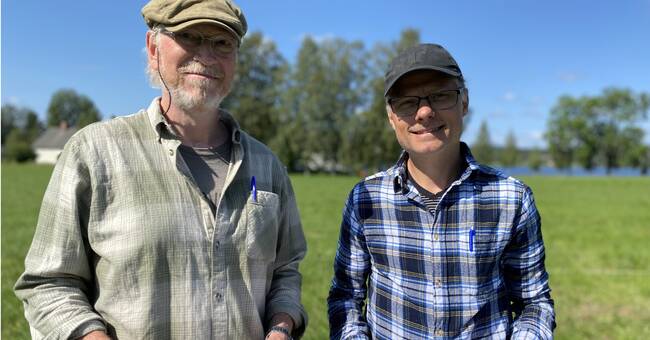The land belongs to Kristina Forsberg who runs a so-called regenerative agriculture.
In short, the method is about excluding fertilizers, chemical pesticides and not using machines to use the soil, and interest in the method has grown.
- It means a lot to know how my land is doing right now and to get feedback in the future if what we do is right and strengthens the earth, as we hope it will do, says Kristina Forsberg.
"On the largest areas, we want them to graze for only one day, absolutely a maximum of three days" - heard Kristina Forsberg tell how they use the animals to make the land feel as good as possible.
Photo: Charlotte Pettersson / SVT
Will be back in five years
For a couple of days, the soil on Kristina's soil has undergone a number of different measurements, such as what grows on it and how fast it absorbs water, so-called EOV measurements.
In five years, the ground will be measured again.
- Here they have not had grazing animals before, so we will be able to clearly measure the effect of grazing animals in five years and how the soil feels then.
And how a regenerative agriculture affects the soil, says Gunnar Therlin who is one of those who work with the measurements.
"Needed for the future"
Three people work with the measurements carried out on agriculture throughout Europe.
Durukan Dudu from Turkey works for the day as a drone pilot.
- It is not the case that we have a lot of financial conditions to do this, we have no grants or financial resources that come in.
I do this because it is really needed, for the future, for the countryside and for future generations.
Durukan Dudu from Turkey works for the day as a drone pilot Photo: Ann-Louise Julin SVT

